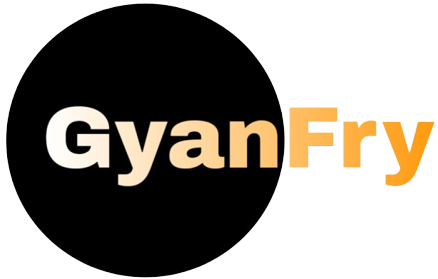Have you ever faced unexpected challenges or surprises after the approval of business loan? Not yet, or maybe yes. Obtaining a business loan is easier in this modern era; gone are the days when you had to make frequent visits to the bank to get your loan amount sanctioned for the business. Thanks to digital applications and online banking, all the hassles have been eliminated from the process. However, it comes with both advantages and drawbacks.
As you embark on the journey of obtaining a business loan, a myriad of questions and concerns should echo in your mind. The weight of business loan terms, coupled with interest rates and the allure of an instant process, should trigger a sense of caution. Because anything instant doesn’t necessarily mean the best. If you still have time to say YES or NO to the business loan sanctioned on your name, here’s a checklist of the top 10 points you ought to verify before the loan amount is transferred to your bank.
Business Loan Interest Rate
![Business Loan is Sanctioned? Verify 10 Points [Before TOO LATE] 2 Business-Loan-Interest-Rates-Explained](https://www.gyanfry.com/wp-content/uploads/2024/03/Business-Loan-Interest-Rate-Explained.webp)
In India, when you’re thinking about getting a business loan, it’s important to understand how interest rates work. The Reserve Bank of India (RBI) sets a base rate, which is the lowest interest rate banks can charge their customers. Currently, the rate on any loan is between 9.10% and 10.25%, which means the lowest business loan interest rate you can expect in India is 9%. The RBI also ensures that the effective interest rate, including all charges, doesn’t go beyond 12.55%.
According to advocate T Kalaiselvan , Vellore, there are rules in place to prevent lenders from charging extremely high interest rates on loans. The standard or normal interest rate that can be charged is limited to 18% – 24% per annum (pa). This means that lenders cannot impose exorbitant interest rates on the loans they provide.
However, for loans above Rs. 2 lakh, banks can set the interest rate, following PLR (Prime Lending Rate) and spread guidelines. To check if your bank is charging the right interest rate, compare it with the RBI’s benchmark rate.
Note: If you have concerns or believe that interest charged by your bank is high, you can file a complaint through the Digital Complaint Management System (CMS) Portal at https://cms.rbi.org.in/cms/IndexPage.aspx. This helps ensure transparency and fairness in the loan process.
Types of Interest in Business Loan
![Business Loan is Sanctioned? Verify 10 Points [Before TOO LATE] 3 Types-of-Interest-in-Business-Loan](https://www.gyanfry.com/wp-content/uploads/2024/03/Types-of-Interest-in-Business-Loan.webp)
Business loan can be sanctioned at multiple interest rates, it depends on your bank. But as a borrower, understanding some typical types of interest rates on loan is essential for smart financial planning. Let’s break it down in simple terms.
Fixed-Interest-Rate Loans:
Imagine you borrow money from the bank, and they tell you, “Okay, the interest rate is fixed at 8% for the entire loan period.” This means that, no matter what happens in the market, your interest rate will stay the same. It’s like locking in a rate to keep things predictable.
Let’s say you borrow 1,00,000 INR with a fixed interest rate of 10% for five years. That means every year, you pay 10,000 INR in interest, and it stays that way for the entire period, making your annual payment predictable.
Floating-Interest-Rate Loans:
Now, picture another scenario. The bank offers you a loan with a floating interest rate of 6% plus the current market rate. This means your interest rate can change based on what’s happening in the economy. It’s a bit like riding a roller coaster – your payments may go up or down as the market fluctuates.
Now, if you choose a floating interest rate of 8% plus the current market rate, your initial interest might be 8,000 INR. But if the market rate rises to 12%, your interest for the next year could go up to 12,000 INR. It adds an element of uncertainty to your payments.
Flat Interest Rate:
Imagine you take a loan, and the bank tells you the interest is calculated on the entire loan amount throughout the loan period. So, if you borrow 1,00,000 INR at a flat interest rate of 12% for five years, you pay 12,000 INR as interest every year, regardless of how much you’ve already repaid. It’s like having a fixed interest amount each year, even as you chip away at the loan.
Let’s break it down further. If you have a flat interest rate, you pay 12,000 INR in interest each year, making it a total of 60,000 INR over five years, no matter how much of the principal you’ve already repaid.
Reducing Interest Rate:
Now, picture a different scenario. With a reducing interest rate, the interest is calculated only on the remaining principal amount. As you repay the loan, the interest amount decreases. If you borrow the same 1,00,000 INR at a reducing interest rate of 12% for five years, your interest payment decreases each year as the principal amount reduces. It’s like a snowball effect, where your interest payment gets smaller over time.
Let’s say, with a reducing interest rate, your first-year interest might be 12,000 INR, but in the second year, it’s calculated on the remaining amount after your first-year repayment. So, if you’ve paid off 20,000 INR in the first year, your second-year interest is calculated on the remaining 80,000 INR, making it a bit less than the first year.
Which is Better?
Reducing interest rates are usually more cost-effective in the long run, as you pay interest only on the remaining balance.
Business Loan Provider
![Business Loan is Sanctioned? Verify 10 Points [Before TOO LATE] 4 Business-Loan-Provider](https://www.gyanfry.com/wp-content/uploads/2024/03/Business-Loan-Provider.webp)
In India, if you’re thinking about getting a loan for your business, there are a few places you can check out. Here’s a simple rundown:
1. Private & Public Banks:
Both big public banks and private banks can lend you money for your business. Public banks usually have lower interest rates, but they might take a bit longer to say “yes” to your loan. On the other hand, private banks might give you a quicker answer and have more flexible loan options, but the interest rates could be a bit higher. If you think that private bank is charging high rate of interest, then you can also try applying in public bank for business loan.
2. Non-Banking Financial Companies (NBFCs):
These are like banks, but a bit different. If a regular bank doesn’t work for you, an NBFC could be an option. They might be more flexible with the loan terms, but keep in mind, their interest rates might be a bit higher. Also, be aware that if an NBFC is doing financial stuff without the right paperwork, they could get in trouble.
3. Microfinance Institutions (MFIs):
MFIs is also a popular destination for those looking for business loans. They are like friendly helpers for small businesses. They give out small loans to people just starting or those who only need a bit of cash to get going. MFIs are typically preferrable option to those who are struggling to obtain loan from banking and non-banking institutions.
4. Government Schemes:
The government in India has special loan plans for businesses. These schemes are sometime obtainable from your bank, and usually have lower interest rates with subsidies attached. These business loan schemes can be a good pick if you need money for business operation or expansion without paying extra on charges and rate of interests.
So, which one is the best for you? It depends on what you need and your situation. Take a look at the interest rates, fees, and how long you have to pay back the loan from different lenders. Compare them, and then decide which one fits your business puzzle the best. Don’t rush – take your time to pick the perfect lender for you.
Business Loan Amount
![Business Loan is Sanctioned? Verify 10 Points [Before TOO LATE] 5 Business-Loan-Amount](https://www.gyanfry.com/wp-content/uploads/2024/03/Business-Loan-Amount.webp)
Getting a big loan because of a good credit score sounds exciting, but it’s super important to think before you dive in. When deciding whether to take out a loan or exploring alternative financial options, asking yourself key questions can help you make a well-informed decision. Here are some questions to consider:
- Do I genuinely need the entire loan amount? Be honest about your needs and only borrow what is essential to avoid unnecessary debt.
- Can I afford the monthly repayments? Assess your current financial situation to ensure that the loan repayments fit within your budget without causing financial strain.
- What is the interest rate, and how does it impact the total cost of borrowing? Understand the interest rates associated with the loan, as higher loan amounts may come with increased interest costs. Compare rates from different lenders to find the best deal.
- Do I have an emergency fund in place? Ensure you have savings set aside for unexpected expenses. Relying on borrowing for emergencies can be risky and might lead to long-term debt.
- Can I negotiate a lower loan amount that aligns with my actual needs? If possible, discuss with the lender to reduce the loan amount, minimizing both your debt and interest payments.
- What is my risk tolerance? Assess how comfortable you are with uncertainty and potential changes in your financial situation. This can guide your decision between fixed and floating interest rates or borrowing and alternative funding methods.
Customizing Your Needs:
- Less Loan, Please: If you can, try to get a smaller loan that matches what you really need. This way, you won’t have a huge debt hanging over you, and you won’t pay crazy interest.
- Check Other Options: Think about different ways to get the money. Maybe use your own savings, ask friends or family, or even try crowdfunding. See what fits best for you.
- Fix Your Finances: If you don’t really need the loan right now, focus on making your money situation stronger. Save up and build a financial cushion so you won’t have to borrow later on.
Consider Debt-to-Equity Ratio
You can also consider your debt-to-equity ratio which is like a financial health check for companies, helping to see how much of a company’s money comes from loans compared to its own funds. A ratio of 2:1 or less is seen as healthy.
For example, let’s say a company has equity (its own money) of 2 million INR and debt (money borrowed) of 1 million INR. The debt-to-equity ratio would be 2:1. In this case, it means the company has 1 unit of debt for every 2 unit of its own money.
A good debt-to-equity ratio is generally around 1 to 1.5. This means the company still has a balanced mix of its own money and borrowed funds.
Business Loan Term
![Business Loan is Sanctioned? Verify 10 Points [Before TOO LATE] 6 Business-Loan-Term](https://www.gyanfry.com/wp-content/uploads/2024/03/Business-Loan-Term.webp)
Alright, here’s another most important thing to consider. When you’re thinking about getting a loan for your business, the “term” is basically how long you’ll take to pay it back. This can be a big decision, and you want to pick the right term for you.
What to Consider:
Think about how much you can afford to pay back every month. If you choose a shorter term, your monthly payments will be higher, but you’ll pay less in total interest. If you go for a longer term, monthly payments are lower, but you might end up paying more overall.
Consider what you’re borrowing for. If it’s a short-term need, like buying inventory, a short-term loan might be cool. But if it’s a big project that takes time, a longer-term could be better.
- Short term loan is ideal when you can afford to pay higher EMI, which results in less interest
- Long term loan is ideal when you can’t afford to pay higher EMI, but you pay high interest due to EMI are smaller
Example:
Let’s say you’re taking a loan of 1,00,000 INR with a 12% annual interest rate. Consider two different Loan Terms,
A: Calculating for a loan term of 1 year (12 months): So, the EMI for a 1,00,000 INR loan at a fixed 12% interest rate for 1 year is approximately 8,884.41 INR. The total interest paid would be approximately 6,613.92 INR.
B: Let’s calculate for a loan term of 2 year (24 months): So, the revised EMI for a 1,00,000 INR loan at a fixed 12% interest rate for 2 years (24 months) is approximately 4,726.91 INR. The total interest paid would be approximately 13,245.84 INR.
Business Loan Fee
![Business Loan is Sanctioned? Verify 10 Points [Before TOO LATE] 7 Business-Loan-Fee](https://www.gyanfry.com/wp-content/uploads/2024/03/Business-Loan-Fee.webp)
When you’re getting a business loan, it’s not just about the interest rate – there are fees that can sneakily increase the overall cost. Let’s break down some of these:
1. High Origination Fees:
- These are fees charged upfront when setting up the loan.
- If they’re too high (like more than 3-5% of the loan amount), it can make your loan more expensive, especially for smaller loans.
- This matters more for shorter-term loans where the interest rate might be lower.
2. Prepayment Penalties:
- You might get charged extra if you pay off your loan early.
- If these penalties are too much (like over 1-2% of what’s left on your loan), they can make you think twice about paying early, even if it’s good for your business.
3. Excessive Closing Costs:
- Closing costs cover various administrative fees when finalizing the loan, like appraisals and paperwork fees.
- If these costs are way higher than what’s normal, it can add up and make your loan more expensive.
4. Multiple or Stacked Fees:
- Some lenders might charge separate fees for things that could be bundled together, like application, processing, and underwriting fees.
- This can make the overall cost shoot up, especially for smaller loans.
5. Hidden or Unexpected Fees:
- Hidden fees aren’t told to you right away – you might find out about them later.
- These surprises can mess up your budget and make your loan more costly.
The worse part is, lenders may take out these fees & charges right from the sanctioned loan . So, if they say, “You’re approved for a 1 Lakh loan,” and then they cut out fees, you might end up getting only 90,000 Rs in your bank account. It’s like they’re taking a slice off the top before you even see the money. Tricky, right? So, it’s crucial to check what fees they’re charging and how much will actually land in your bank.
Pre-Payment Options
![Business Loan is Sanctioned? Verify 10 Points [Before TOO LATE] 8 Pre-Payment-Options](https://www.gyanfry.com/wp-content/uploads/2024/03/Pre-Payment-Options.webp)
Loan prepayment is a valuable feature for borrowers. While paying off loan before due date brings numerous benefits, borrowers must carefully consider the terms and conditions set by their lender, especially if prepayment is not accepted or if associated penalties are present.
One of the primary advantages of loan prepayment or loan foreclosure is the potential for significant interest savings. By paying off the loan before the scheduled end, borrowers can reduce the overall interest amount they would have paid if adhering to the original repayment timeline.
It allows individuals or businesses to manage their finances more efficiently by settling debts early, freeing up resources for other investments, savings, or unforeseen expenses.
Example: Imagine you took a loan of 1,00,000 INR for 3 years with an interest rate of 12%. If you decide to prepay after one year, you won’t pay interest for the remaining two years, saving you a significant amount. If you consistently make early payments, your credit score improves which attracts better loan offers in future.
Without the option for prepayment, borrowers may miss out on the opportunity to save on interest costs. This could result in a higher total repayment amount over the loan tenure.
Subsidies & Government Scheme
![Business Loan is Sanctioned? Verify 10 Points [Before TOO LATE] 9 Subsidies-Government-Scheme-Business-Loan](https://www.gyanfry.com/wp-content/uploads/2024/03/Subsidies-Government-Scheme.webp)
When thinking about a business loan, don’t forget to check out subsidies and government schemes. Here’s why:
- Reduced interest rates: Imagine getting a discount on your loan interest! Government schemes often do that, helping you save money by paying a part of the interest themselves. This means more cash for your business.
- Lower fees: Some schemes are extra kind – they cut down or even cancel processing fees and other costs linked to the loan. It’s like a sale on loan expenses!
- Targeted schemes: There are schemes that specifically cheer on certain businesses or groups for exam Woman Loan Schemes.
- Relaxed eligibility criteria: Some schemes are like the cool teachers – not too strict. For example – such schemes often make it simpler for startups or small businesses to get the green light. If you are a startup, then you should certainly ask your lender about this scheme.
Top-Up Offers on Business Loan
![Business Loan is Sanctioned? Verify 10 Points [Before TOO LATE] 10 Top-Up-Offers-on-Business-Loan](https://www.gyanfry.com/wp-content/uploads/2024/03/Top-Up-Offers-on-Business-Loan.webp)
A Top-Up Offer on a Business Loan is a convenient way to secure extra funds on top of your existing business loan from the same lender. This option comes with both benefits and considerations that are important to understand.
Let’s Talk About Benefits First:
- Convenient Process: Applying for a top-up is quicker and simpler than seeking an entirely new loan. Since you’re dealing with the same lender, the process is streamlined, given your established relationship.
- Potential for Lower Interest Rates: A perk of a top-up is the chance to snag a lower interest rate compared to applying for a new loan. This is particularly likely if you’ve maintained a stellar repayment history with your existing loan.
- Simplified Documentation: The paperwork for a top-up is generally less exhaustive than that required for a fresh loan. The lender already has your information, making the documentation process smoother.
Important Considerations:
- Eligibility Criteria: Not everyone with an existing business loan automatically qualifies for a top-up. Lenders set specific criteria based on factors like creditworthiness, outstanding loan balance, and your business’s performance.
- Limited Borrowing Amount: The maximum you can borrow through a top-up offer is usually capped at a certain percentage of your existing loan amount.
- Interest Rate Dynamics: While a top-up might offer a lower rate than a new loan, it could still have a higher interest rate compared to your original loan.
- Repayment Terms: Be prepared for potentially shorter repayment terms with a top-up, leading to higher monthly payments than your original loan.
- Comparison is Key: Before jumping in, carefully compare the interest rate and terms of the top-up offer with other available loan options in the market.
Collateral Terms in Business Loan
![Business Loan is Sanctioned? Verify 10 Points [Before TOO LATE] 11 Collateral-Terms-in-Business-Loan](https://www.gyanfry.com/wp-content/uploads/2024/03/Collateral-Terms-in-Business-Loan.webp)
In the realm of business loans, collateral terms can be a double-edged sword, offering potential benefits but carrying inherent risks. Here’s a practical guide to help you navigate this aspect of financing, watch carefully if your loan term says anything about collateral.
#1 Loss of Assets:
- Risk: If you can’t meet loan obligations, the lender can legally take and sell the pledged asset.
- Example: Defaulting on a loan secured with your business equipment may result in losing that equipment.
#2 Limited Growth Potential:
- Risk: Tying up assets as collateral might limit your ability to use them for future financing needs.
- Example: Pledging property as collateral now may reduce options for securing a loan to expand your business later.
#3 Negative Impact on Credit Score:
- Risk: Defaulting on a secured loan could harm your business credit score, making future financing challenging.
- Example: Failing to repay a loan backed by inventory may negatively impact your ability to borrow in the future.
#4 Stressful Repayment:
- Risk: The fear of losing valuable assets can add significant stress to the loan repayment process.
- Example: Knowing that defaulting could result in losing your business property may cause stress during repayments.
Information to Consider Before Using Collateral:
#1. Explore Alternatives:
- Advice: Consider unsecured loans or personal guarantees to avoid risking assets.
- Example: Opting for an unsecured loan with higher interest rates instead of pledging business machinery.
#2. Negotiate Terms:
- Advice: Discuss collateral-related terms with the lender to align them with your needs.
- Example: Negotiating the type and valuation process
When it comes to securing a business loan, being thorough is not just wise—it’s essential. To ensure a solid financial foundation for your enterprise, consider these 10 key points before finalizing that loan agreement. From scrutinizing interest rates and understanding the nuances of interest types to choosing a reliable loan provider and evaluating collateral terms, each aspect demands attention. Don’t forget to explore pre-payment options, government subsidies, and top-up offers, as they could make a significant impact on your loan journey.

![Business Loan is Sanctioned? Verify 10 Points [Before TOO LATE] 1 Business-Loan-is-Sanctioned-Verify-10-Points-Before-TOO-LATE](https://www.gyanfry.com/wp-content/uploads/2024/03/Business-Loan-is-Sanctioned-Verify-10-Points-Before-TOO-LATE.webp)








